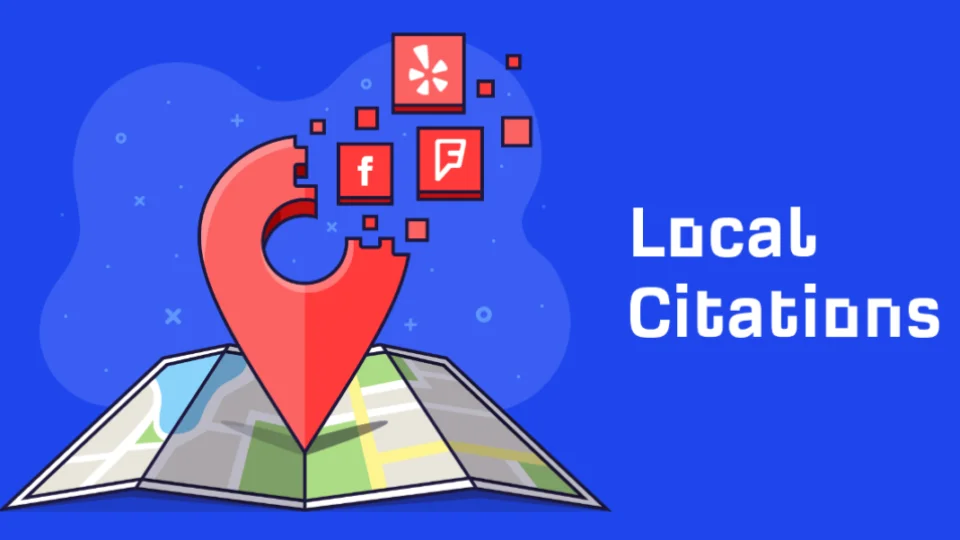Local Citation Building: The Complete 2025 Playbook for Dominating Local Search
Local customers rarely flip through a phone book anymore—they ask Google, Apple Maps, or voice assistants for businesses “near me.” If your company’s name, address, and phone number do not appear consistently across key directories, you may vanish from those results. Local citation building is the systematic process of placing and correcting business listings across the web to boost local rankings, trust, and foot traffic. This 1 500‑plus‑word guide explains everything you need to know—from citation types and data accuracy to automation tools and measurable ROI.
Table of Contents
- What Is a Local Citation?
- Why Local Citation Building Still Matters in 2025
- Structured vs. Unstructured Citations
- Comparison Table: Manual, Automated, and Hybrid Citation Building
- Step‑by‑Step Local Citation Building Checklist
- Pros and Cons of Each Citation Strategy
- Tracking Success: KPIs and Reporting Tips
- Frequently Asked Questions
- Conclusion and Action Plan
1. What Is a Local Citation?

A local citation is any online mention of your business’s core contact details—often called NAP: name, address, and phone number. Common citation elements include:
- Business name
- Street address and unit number
- City, state, postal code
- Primary phone number (local area code preferred)
- Website URL
- Categories, hours, or images (in enhanced listings)
When the same NAP appears consistently across high‑authority directories, search engines feel confident that your business is real, active, and relevant to local searches.
2. Why Local Citation Building Still Matters in 2025

Improves Local Pack Rankings
Citation signals remain among Google’s top local ranking factors, especially for businesses without many backlinks.
Builds Trust and Authority
Consumers cross‑check details on Yelp, Apple Maps, Facebook, and industry‑specific directories before visiting. Inconsistent NAP erodes credibility.
Increases Referral Traffic
Each directory listing acts as a micro landing page that can drive phone calls, driving‑direction requests, or website clicks.
Supports Voice Search
Smart speakers pull data from sources like Yelp, Bing Places, and data aggregators. A missing or incorrect listing can silence your business in voice results.
3. Structured vs. Unstructured Citations

| Citation Type | Where It Appears | Data Format | SEO Impact |
|---|---|---|---|
| Structured | Directories, map apps, review sites | Form fields (name, address, phone) | Strong; easy for crawlers to parse |
| Unstructured | Blog posts, press releases, social media | In‑line text or captions | Moderate; reinforces relevance |
Both forms matter, but structured citations carry more weight because search engines can digest them quickly.
4. Comparison Table: Manual vs. Automated vs. Hybrid Citation Building
| Factor | Manual Submission | Automated Platforms | Hybrid Approach |
|---|---|---|---|
| Up‑front cost | Low (time only) | Medium monthly fees | Medium |
| Time investment | High | Low | Moderate |
| Data accuracy control | Excellent | Good; relies on bulk upload | Very good |
| Speed to deploy | Slow (one by one) | Fast (hundreds in days) | Balanced |
| Ongoing maintenance | Manual checks | Automated sync | Automated with manual spot audits |
| Ideal for | Single‑location startups | Multi‑location enterprises | Agencies managing varied clients |
5. Step‑by‑Step Local Citation Building Checklist
Step 1. Gather Master NAP Information
Create a single source of truth—often a spreadsheet—with:
- Legal business name and any DBA variations
- Street address as recognized by postal services
- Primary local phone number (avoid call‑tracking numbers at first)
- Official website URL with HTTPS
- Business categories and hours
Step 2. Audit Existing Citations
- Search queries like “business name + phone” or “address + suite.”
- Note inconsistencies—old addresses, toll‑free numbers, or misspelled names.
- Prioritize high‑authority sites (Google Business Profile, Yelp, Apple Maps).
Step 3. Claim and Correct Core Listings
- Google Business Profile—verify via postcard, phone, or email.
- Bing Places & Apple Maps—sync details and upload images.
- Facebook Page—ensure categories and map pin are accurate.
- Industry‑specific sites—Tripadvisor for hotels, Avvo for attorneys, etc.
Step 4. Submit to Data Aggregators
In the United States, key aggregators include:
- Data Axle (formerly Infogroup)
- Neustar Localeze
- Foursquare Places
- Factual / Places Plus
These feed dozens of smaller directories automatically.
Step 5. Fill Secondary Directories
- Yelp, YellowPages, BBB
- Niche directories (HomeAdvisor, Houzz)
- Local chamber of commerce or city tourism sites
Step 6. Build Unstructured Citations
- Sponsor local events (press releases list your NAP)
- Guest post on local blogs with a byline that includes your address
- Get mentioned in local news features and community calendars
Step 7. Schedule Quarterly Audits
Run automated scans or spot‑check top directories to fix new inconsistencies triggered by user edits or data merges.
6. Pros and Cons of Each Citation Strategy
Manual Citation Building
Pros
- Full control over every field
- No recurring software costs
- Can prioritize quality over quantity
Cons
- Time‑intensive
- Easy to overlook hidden duplicates
- Harder to scale for multi‑location brands
Automated Citation Tools (e.g., Yext, BrightLocal, Moz Local)
Pros
- Rapid deployment across hundreds of sites
- Dashboard for edits, hours changes, holiday closures
- Duplicate suppression and ongoing sync
Cons
- Monthly or annual subscription fees
- Data reverts if you cancel service on some platforms
- Less customization on individual directory profiles
Hybrid Approach
Combine software for bulk distribution with manual tweaks for top‑tier sites.
Pros
- Best balance of speed and accuracy
- Maintain premium listings by hand (Google, Yelp)
- Use tools for long‑tail directories
Cons
- Requires process planning and training
- Still incurs both time and software costs
7. Tracking Success: KPIs and Reporting Tips
| KPI | How to Measure | Why It Matters |
|---|---|---|
| Citation consistency score | Use audit tools or manual checks | Ensures data reliability |
| Local Pack rankings | Track primary keywords in rank‑tracking software | Directly correlates with foot traffic |
| Google Business Profile actions | Calls, website clicks, direction requests | Indicates listing visibility |
| Organic traffic from local keywords | Google Analytics, GSC filters | Shows SEO impact beyond map pack |
| New reviews per month | Google, Yelp dashboards | Social proof and ranking factor |
Create a monthly report that pairs citation metrics with lead indicators such as phone calls or store visits. This closes the loop for stakeholders.
8. Frequently Asked Questions
How many citations do I need to rank locally?
Quality beats quantity. Focus on 30 to 50 high‑authority, relevant directories before chasing every low‑value listing.
Should I pay for premium directory placements?
Only if the directory aligns with your industry and offers visible perks (do‑follow link, top‑of‑category placement, or review widgets). Otherwise, free listings suffice.
Can inconsistent citations cause ranking drops?
Yes. Conflicting NAP data confuses algorithms and can reduce trust, leading to lower local pack placement.
How often should I update citations?
At least quarterly. Immediately update if you move, change phone numbers, or adjust hours.
Do call‑tracking numbers hurt local SEO?
Use dynamic call‑tracking numbers only on your website and ads. Keep a consistent primary phone number across all directory citations.
9. Conclusion and Action Plan
Local citation building remains a cornerstone of local SEO in 2025. Accurate, widespread NAP listings build trust, elevate map pack rankings, and funnel ready‑to‑buy customers straight to your door.
Next Steps:
- Create your master NAP document today.
- Audit and correct top‑tier listings within the next week.
- Submit to data aggregators and secondary directories this month.
- Schedule quarterly audits to maintain consistency.
Ready to boost your local visibility? Start executing this checklist now and watch your phone ring, inbox ping, and storefront traffic grow.






